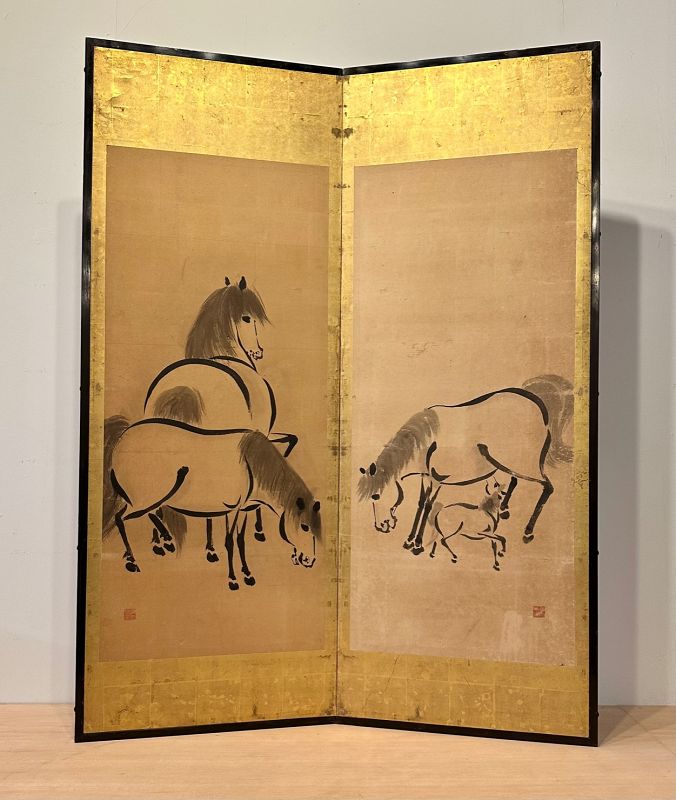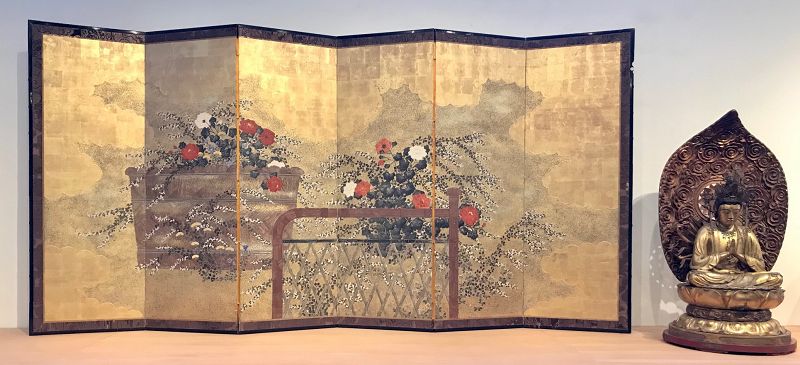Japanese Two Panel Screen Sumi with Horses
$4,000.00
Japanese two panel screen depicting a family of horses. Painted with a simple flowing style of sumi ink on paper. Bordered in original aged gold leaf and black lacquered frame.
The horse has always been considered the sacred mount of the kami, Japanese gods. During the Nara period (710-794), the practice of shinme, consisting in offering a horse as a votive offering to a shrine to serve as a divine mount, spread. It was thus customary during a prayer or a wish to present a horse to the kami of the sanctuary as a sign of gratitude.
The animal was associated with the cult of the rain. It was customary to offer a black horse to pray for the occurrence of this and conversely, a white horse for it to cease. These horses given to the sanctuaries were then bred in special stables within the sanctuaries. This practice proved to be very costly for the sanctuaries, obliged to take great care of these offerings, but also for the pilgrims.
Age: Taisho Period C. 1920's
Dimensions: 51 1/2" wide x 63" high
https://zentnercollection.com/product/japanese-two-panel-screen-sumi-with-horses/


